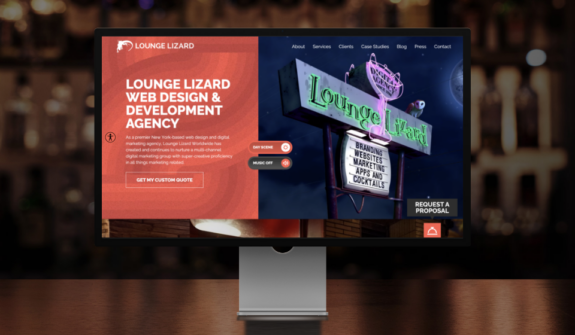Generate More Leads With These Proven Email Strategies

In today’s fast-paced digital landscape, email remains a vital tool for businesses seeking to enhance customer engagement and drive sales. The art of crafting compelling email marketing campaigns lies at the heart of effective digital marketing strategies. Let’s delve into these proven email strategies that can significantly boost your lead-generation efforts. We’ll explore innovative tactics and techniques that cater to the evolving preferences of your target audience, ensuring your marketing messages not only reach their inboxes but also inspire them to take action.
Strategies for Email Marketing
- Understanding the Target Audience: Knowing your audience is the first step in any successful email marketing strategy. Tailoring content to meet their specific needs and preferences can dramatically increase engagement and open rates.
- Crafting Compelling Subject Lines: The power of an enticing subject line can’t be overstated. It’s the first impression that decides whether your email gets opened or ignored.
- Personalization: Sending emails that resonate with recipients on a personal level can significantly boost click-through rates. Personalized emails create a sense of connection and add a touch of relevancy to the buyer’s journey.
- Timing and Frequency: Determining the best time to send emails and how often to send them is crucial for maintaining a good relationship with your audience without overwhelming them.
Email Marketing Strategies
- Mobile Optimization: With the increasing use of mobile devices to check emails, optimizing your email for mobile devices is essential.
- Split Testing: Regularly tested email strategies, including A/B testing of subject lines, content, and calls to action, can provide valuable insights into what works best for your audience.
- Integration with Other Channels: Complementing email campaigns with social media and other marketing channels can amplify your message and reach a broader audience.
Email Management Strategies
- Organized Contact Lists: Segmenting your email list based on customer behavior and preferences can lead to more targeted and effective campaigns.
- Analysis of Performance Metrics: Keeping a close eye on open rates, click-through rates, and conversions helps in refining your strategies and improving their effectiveness.
What is the Definition of an Email Marketing Strategy
An email marketing strategy is a comprehensive plan that guides the design, execution, and analysis of email campaigns to achieve specific business objectives. This strategy encompasses various components crucial for successful email communication with customers and prospects. It involves identifying the target audience, setting clear marketing goals, crafting engaging content, determining the optimal sending frequency, and employing methods to track and analyze the campaign’s performance. An effective email marketing strategy aligns with the overall marketing plan and brand messaging, ensuring a consistent and unified approach across all marketing channels.
Strategies for Email Marketing
- Goal Setting: Clearly define the goals for your email campaigns. Whether it’s to increase website traffic, promote a new product, or improve customer retention, having specific objectives helps to tailor your strategy effectively.
- Content Relevance: Developing content that is both informative and engaging is crucial. Content should be tailored to the interests and needs of the audience, and should always provide value, whether it’s through educational material, entertainment, or promotional offers.
- Continuous Improvement: Email marketing is an evolving field. Regularly updating strategies based on feedback and performance metrics is essential for staying relevant and effective.
Email Management Strategies
- Effective List Management: Maintaining a clean and segmented email list is key. Regularly removing inactive subscribers and segmenting the list based on customer behavior and preferences ensures higher engagement rates.
- Compliance with Regulations: Adhering to email marketing laws and regulations is crucial. This not only includes GDPR but also CAN-SPAM Act in the USA, and other regional laws. Following these regulations builds trust and safeguards your brand’s reputation.
Emailing Strategy
- Segmentation and Personalization: Creating emails that speak directly to the user’s interests and needs can significantly increase engagement. This involves segmenting the email list based on various criteria like past purchases, location, or engagement level.
- Multichannel Approach: An effective emailing strategy is not isolated. It should integrate seamlessly with other marketing efforts, like social media, content marketing, and traditional advertising, to create a holistic marketing experience.
Sample Email Marketing Strategy
A sample email marketing strategy provides a practical framework for businesses to understand and implement effective email marketing practices. It serves as a guide to developing a customized strategy that aligns with a company’s specific goals, audience, and resources. This blueprint typically includes tactics such as segmenting the audience for targeted communication, designing emails for high engagement, and setting measurable objectives to track the success of the campaign. The strategy also involves a continuous process of testing and refinement to adapt to changing consumer behaviors and market trends.
Email Marketing Strategy Sample
- Welcome Email Series: A well-crafted welcome email series is crucial for setting the right tone and building a relationship with new subscribers. This series can introduce your company, provide valuable resources, and set expectations.
- Educational Content: Emails that educate your audience about your products, industry, or other relevant topics can establish your brand as a knowledgeable leader and build trust with your audience.
- Promotional Campaigns: Well-timed promotional emails that offer genuine value can drive sales and customer engagement. These should be personalized and relevant to the recipient’s interests.
Strategies for Email Marketing
- Consistent Branding: Your emails should be instantly recognizable as coming from your brand. This includes using a consistent tone of voice, color scheme, logo, and overall design style.
- Clear Call to Action: Ensure that every email has a clear, compelling call to action. Whether it’s to read a blog post, check out a sale, or contact your team, your CTA should be obvious and enticing.
Email Management Strategies
- Performance Analysis: Use analytics to track open rates, click-through rates, and conversions. This data is invaluable for understanding what resonates with your audience and what doesn’t.
- Feedback Loops: Actively seek feedback from your subscribers. This can be done through surveys, feedback forms, or even direct replies to your emails. Use this feedback to improve your future campaigns.
Effective Email Marketing Strategy
An effective email marketing strategy goes beyond just sending out emails. It’s about creating a tailored experience for your audience that is both engaging and action-oriented. This involves understanding the nuances of your target market, developing content that resonates with them, optimizing for various devices, and utilizing data to make informed decisions. An effective strategy is dynamic, adapting to the changing behaviors and preferences of the audience, as well as the evolving digital landscape. It’s a balance of creativity, analytics, and technical know-how.
Email Management Strategies
- Data-Driven Decisions: Utilizing analytics and user feedback to guide email content, design, and scheduling decisions. This approach ensures that each aspect of your email strategy is backed by solid data.
- User-Friendly Design: Emails should be visually appealing and easy to navigate. This includes responsive design for optimal viewing on mobile devices and a layout that guides the reader through the content.
Email Newsletter Strategy
- Regular Newsletters: Consistent newsletters help keep your audience engaged and informed. These can include company news, industry insights, and relevant offers or promotions.
- Community Building: Use your newsletters to build a community around your brand. Share customer stories, user-generated content, and behind-the-scenes glimpses to create a more personal connection.
Effective Email Campaign Strategies
- Event-Triggered Emails: Automated emails triggered by specific actions like a purchase or website visit can provide timely and relevant content to your audience.
- Seasonal Campaigns: Tailoring your email campaigns to align with holidays, seasons, or special events can make your content more relevant and engaging.
Best Email Marketing Strategies
The landscape of email marketing continues to evolve with new technologies and changing consumer expectations. The best strategies will be those that are not only innovative but also empathetic to the needs and preferences of the audience. This includes a stronger emphasis on personalization, a greater focus on privacy and data security, and the use of advanced technologies like AI for better targeting and automation. Successful email strategies in the near future will be those that are flexible, data-driven, and seamlessly integrated with other digital marketing channels.
Email Management Strategy
- Advanced Personalization: Utilizing advanced data analytics and AI to create highly personalized email content that speaks directly to the individual needs and interests of each recipient.
- Privacy-Centric Approach: With increasing scrutiny of data privacy, adopting a transparent and respectful approach to subscriber data is crucial. This involves clear communication about data usage and adhering to privacy regulations.
Email Strategy Best Practices
- Interactive Content: Incorporating interactive elements in emails such as quizzes, polls, and interactive images can significantly increase engagement and provide valuable insights into subscriber preferences.
- Predictive Analytics: Using predictive analytics to anticipate future behaviors and preferences of subscribers, allowing for more targeted and effective email campaigns.
Effective Email Campaign Strategies
- AI-Driven Automation: Leveraging AI and machine learning to automate and optimize various aspects of email campaigns, from personalization to send times, for maximum effectiveness.
- Omnichannel Integration: Integrating email marketing efforts with other digital channels like social media, websites, and mobile apps for a cohesive and unified customer experience.
Conclusion: Mastering the Art of Email Marketing
In the dynamic realm of digital marketing, mastering the art of email marketing is more crucial than ever. As we’ve explored, effective email strategies are not just about sending out messages; they’re about creating meaningful, personalized connections with your audience. Whether it’s through meticulously crafted welcome emails, educational content, or targeted promotional campaigns, each email is an opportunity to deepen the relationship with your audience.
The landscape of email marketing continues to evolve at a rapid pace. Embracing these changes requires a flexible and forward-thinking approach. Businesses must be ready to integrate advanced technologies like AI for personalization and automation, while also maintaining a strong focus on privacy and ethical data usage. The best email marketing strategies will not only capture the attention of your audience but will resonate with them on a personal level.
Incorporating interactive elements, employing predictive analytics, and maintaining a cohesive narrative across all digital channels are set to become key facets of successful email campaigns. However, the core principles of understanding your audience, delivering valuable content, and continuously refining your approach based on feedback and data, will remain as important as ever.
As you implement these strategies, remember that email marketing is not a static discipline. It’s a constantly evolving conversation between your brand and your target audience. By staying attuned to their needs, preferences, and behaviors, and by adapting your strategy accordingly, you can create email campaigns that not only reach inboxes but also touch their hearts and minds.
In essence, the future of email marketing lies in a balanced blend of technology and personal touch. It’s about leveraging data and insights to deliver content that is not just seen but felt and responded to. As we forge ahead, these principles will guide businesses in crafting email marketing campaigns that are not only effective but also resonate deeply with their target audience, fostering loyalty and driving success in this ever-evolving digital age. If you are looking for assistance in generating more leads and are looking for an agency of record, reach out to our Lounge Lizard brandtenders today.






